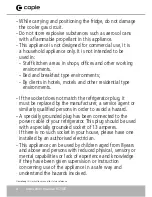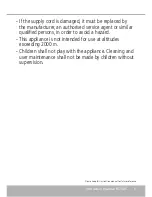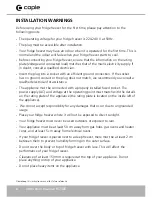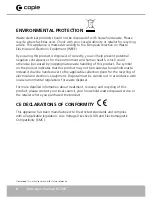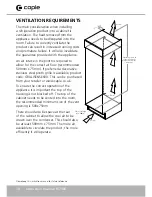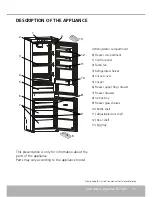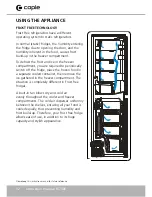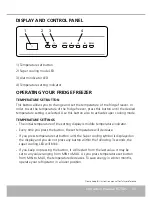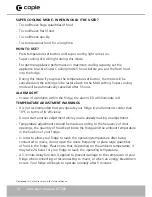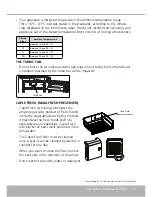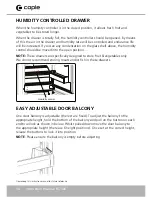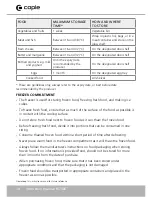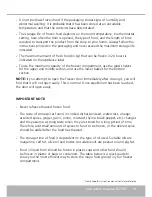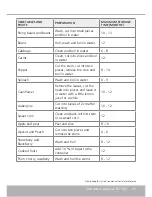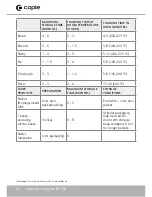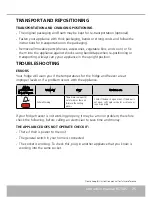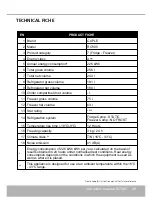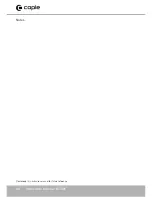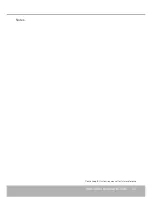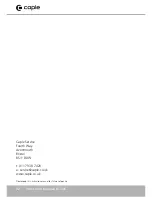
Instruction manual Ri7305
Please keep this instruction manual for future reference
17
FOOD STORAGE
REFRIGERATOR COMPARTMENT
- To reduce humidity and avoid the consequent formation of frost, always store
liquids in sealed containers in the refrigerator. Frost tends to concentrate in the
coldest parts of the evaporating liquid and, in time, your appliance will require
more frequent defrosting.
- Never place warm food in the refrigerator. Warm food should be allowed to cool
at room temperature and should be arranged to ensure adequate air circulation in
the refrigerator compartment.
- Make sure no items are in direct contact with the rear wall of the appliance as
frost will develop and packaging will stick to it. Do not open the refrigerator door
frequently.
- We recommend that meat and clean fish are loosely wrapped and stored on the
glass shelf just above the vegetable bin where the air is cooler, as this provides the
best storage conditions.
- Store loose fruit and vegetable items in the crisper containers.
- Storing fruit and vegetables separately helps prevent ethylene-sensitive vegetables
(green leaves, broccoli, carrot, etc.) being affected by ethylene-releaser fruits
(banana, peach, apricot, etc.).
- Do not put wet vegetables into the refrigerator.
- Storage time for all food products depends on the initial quality of the food and
an uninterrupted refrigeration cycle before refrigerator storage.
- To avoid cross-contamination do not store meat products with fruit and
vegetables. Water leaking from meat may contaminate other products in the
refrigerator. You should package meat products and clean any leakages on the
shelves.
- Do not put food in front of the air flow passage.
- Consume packaged foods before the recommended expiry date.
NOTE:
Potatoes, onions and garlic should not be stored in the refrigerator. The
table on page 20 is a quick guide to show you the most efficient way to store the
major food groups in your refrigerator compartment.


